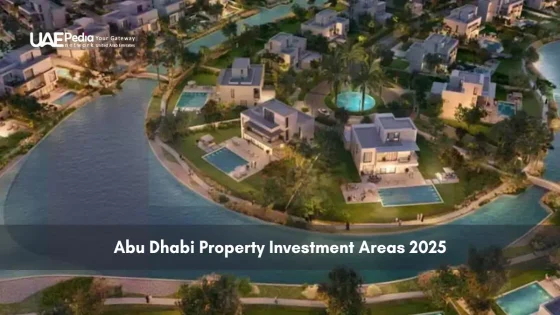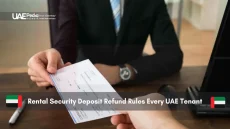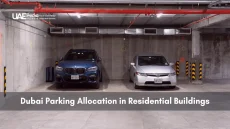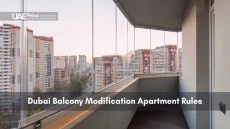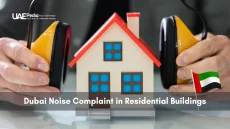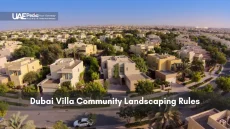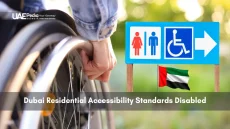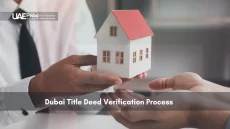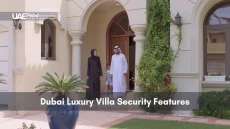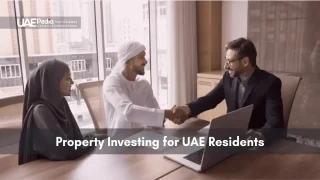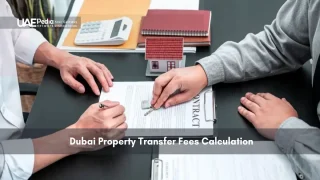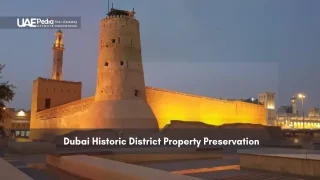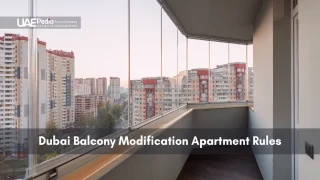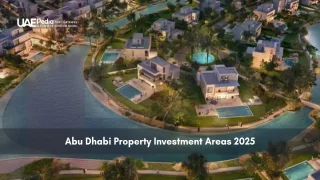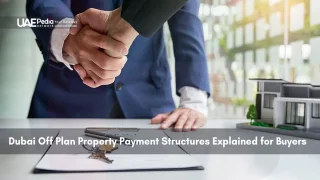What if luxury living could reduce your carbon footprint? The UAE’s real estate market is growing by 2.25% annually—but here’s the twist: nearly half of new developments now prioritize eco-conscious design. Think solar-powered villas nestled beside lush green spaces, where innovation meets tradition in unexpected ways.
From Emaar Properties’ cutting-edge communities to tax-free investment opportunities, builders are blending opulence with responsibility. These neighborhoods don’t just look futuristic—they’re built to last, using renewable energy systems that slash utility costs while protecting desert ecosystems. Even rental yields here (5–10% annually) reflect smart, long-term thinking.
Curious how these projects work? We’ll explore how real estate funds in the UAE fuel this green revolution, creating homes that dazzle without draining resources. Whether you’re investing or dreaming of a sun-powered oasis, this is where tomorrow’s skyline takes shape.
Key Takeaways
- Luxury meets eco-friendly innovation in Dubai’s newest residential communities
- Renewable energy integration reduces costs while boosting property value
- Strategic urban planning creates harmony between modern living and natural environments
Understanding the Rise of Sustainable Real Estate in Dubai
Imagine sipping karak chai on your balcony while solar panels power your AC—this blend of tradition and tech defines the emirate’s latest residential wave. Builders here aren’t just stacking concrete; they’re crafting ecosystems where shaded walkways breathe alongside native plants, and rooftops double as energy farms.
Blueprints That Cool the Planet
Developers now use smart glass that tints with the sun’s glare and greywater systems watering vertical gardens. Take the construction sector’s shift: 72% of new towers meet LEED Silver standards, while Estidama’s Pearl Rating ensures every drop of water gets reused. One architect told us, “We design buildings that sweat less—like the region’s ancient wind towers, but with AI.”
Rules That Spark Innovation
Dubai’s 2021 Green Building Regulation didn’t just set targets—it sparked a race. Builders earn tax breaks for hitting energy-saving benchmarks, while districts like Al Barari mandate 60% green space. These policies birthed communities where monthly bills drop 40%, proving responsibility and ROI can coexist.
From recycled steel frames to neighborhood-wide smart grids, every choice whispers a truth: luxury no longer means excess. Here, comfort walks hand-in-hand with conservation—and the skyline’s shimmer reflects both ambition and restraint.
Showcasing dubai sustainable housing development projects
Step into communities where innovation isn’t just seen—it’s lived, every day. The UAE’s real estate leaders are rewriting the rules of modern living, blending smart tech with nature-inspired design. From energy-smart towers to districts cooled by AI-driven breeze systems, these spaces prove progress and planet care can thrive together.
Architects of Change
Emaar’s latest towers use recycled steel and self-cooling facades that cut AC needs by 35%. Damac’s waterfront residences feature rainwater harvesting systems, while Meraas integrates vertical farms into apartment complexes. Sobha Realty’s 3D-printed structures slash construction waste—one engineer noted, “We’re building smarter, not harder.”
Blueprints for Balanced Living
Places like Dubai Hills Estate and City Walk aren’t just addresses—they’re living labs. Think district-wide solar grids and pedestrian paths shaded by native ghaf trees. “My utility bills dropped 30% without sacrificing comfort,” shares a resident in a LEED-certified complex.
| Community | Energy Source | Green Space | Smart Feature |
|---|---|---|---|
| Downtown Dubai | Solar + Wind | 40% | AI Traffic Flow |
| Dubai Hills Estate | Geothermal | 55% | Smart Waste Chutes |
| City Walk | Hybrid Grid | 35% | Sensor Lighting |
These master plans show how cities can breathe—literally. Rooftop gardens filter air, while advanced materials keep interiors cool without guzzling power. It’s not just housing; it’s a roadmap for harmonious urban life.
Eco-Friendly Features and Technologies Transforming Dubai Real Estate
Picture a home where your morning coffee brews using sunlight captured through window panels—this isn’t sci-fi, but today’s blueprint for smarter living. Builders are weaving cutting-edge tech into every beam and pipe, creating spaces that think ahead.
Powering Progress With Smarter Solutions
High-efficiency HVAC units now learn your schedule, adjusting temps before you wake. Solar skins—thin films clinging to rooftops—generate power without clunky panels. “Our smart grid cut energy use by 40%,” beams a engineer at Nakheel’s latest tower. Check how top systems stack up:
| Technology | Key Feature | Impact |
|---|---|---|
| Phase-Change Walls | Store coolness at night | 35% AC savings |
| AI Lighting | Mimics natural daylight cycles | 27% less usage |
| Wind Catchers | Passive cooling towers | Zero energy cost |
Every Drop Counts—And Gets Reused
Greywater systems now redirect shower runoff to irrigate vertical gardens. Smart meters track consumption down to the liter—one family slashed their water use by 60% using leak alerts. For larger scales, waste management strategies turn trash into treasure, like the plant converting food scraps into biogas for 2,000 homes monthly.
“Our building’s recycling chutes sort materials automatically—no more guesswork,” shares a resident in Jumeirah’s newest eco-tower.
These features aren’t just gadgets—they’re gateways. As tech evolves, spaces grow wiser, quietly crafting a future where comfort and care flow as naturally as the morning sun.
Vibrant Green Spaces and Smart Urban Living in Dubai
Stroll through neighborhoods where desert sands meet emerald oases—urban planning here reimagines what cities can become. Lush parks bloom where parking lots once sprawled, while smart transit networks hum quietly beneath palm-lined streets.
Breathing Room in Concrete Jungles
Vertical gardens now climb towers like living tapestries, cooling air naturally while slashing carbon output. Al Safa Park’s recent expansion added 18km of shaded trails, with native plants chosen for low water use. “Our rooftop farm grows 800kg of veggies monthly,” shares a resident in JLT’s green tower cluster.
Innovative construction methods help these spaces thrive. Permeable pavements let rainwater recharge aquifers, while recycled materials form playground structures. It’s urban design that thinks beyond concrete—prioritizing shade, breeze, and community connection.
Getting Around Without Guilt
Pedestrian zones now outpace car lanes in newer developments. Check how transit options compare:
| District | EV Chargers | Shaded Walkways | Bike Shares |
|---|---|---|---|
| Business Bay | 120 | 8km | 45 stations |
| Dubai Creek | 75 | 12km | 32 stations |
Solar-powered tram networks and app-based carpool systems cut commute times by 25% in pilot areas. As one planner notes, “We’re building cities for people, not engines.” These technologies don’t just move bodies—they foster street life, turning commutes into chances to chat with neighbors.
Through smart initiatives and nature-first planning, urban spaces become catalysts for both conservation and connection. The result? Communities where every errand doubles as a breath of fresh air.
Investor and Resident Benefits of Sustainable Real Estate in Dubai
What if your home paid you back? Properties blending smart tech with nature-focused design are rewriting the rules of value. Let’s break down why these properties are winning hearts and wallets.
Smart Savings, Lasting Value
Residents in LEED-certified towers report 30% lower utility bills thanks to solar panels and water-saving fixtures. One family shared, “Our AC runs half as much since we moved—our windows literally work like thermostats!” Check how different communities stack up:
| Development | Energy Savings | Water Savings | Certifications |
|---|---|---|---|
| Green Heights | 42% | 38% | LEED Platinum |
| Eco Bay Residences | 35% | 41% | Estidama 2 Pearl |
| Sky Oasis | 28% | 33% | BREEAM Excellent |
Investors see perks too. Green-certified units sell 18% faster and command 7-12% higher prices. “Buyers ask about energy ratings first now,” notes a broker specializing in eco-friendly properties.
Beyond numbers, these spaces boost life quality. Air-purifying walls filter out pollutants, while noise-reducing materials create calm. Recycling hubs turn 85% of waste into resources—aligning with global trends that attract eco-conscious renters.
From cutting-edge management systems to innovations like biogas generators, every detail serves dual purposes: protecting the planet while padding pockets. It’s not just housing—it’s a blueprint for thriving in tomorrow’s world.
Charting a Path Toward a Greener Urban Future
Envision a metropolis where skyscrapers and solar farms coexist seamlessly—this is tomorrow’s blueprint taking shape today. The emirate’s 2040 vision weaves renewable energy sources into every neighborhood, from AI-optimized wind catchers to pavement tiles that generate power from footsteps. By 2050, 75% of energy here could come from clean tech, aligning with Dubai’s 2030 industrial roadmap for smarter growth.
Architects now design towers that act like living organisms—self-cooling facades, algae-powered bio-walls, and modular units adapting to climate shifts. These green building breakthroughs don’t just slash carbon footprints; they create communities where parks double as carbon sinks and rooftops host urban farms. One planner quips, “We’re not just planting trees—we’re engineering ecosystems.”
The ripple effects extend globally. Every energy-efficient tower here inspires similar projects from Miami to Mumbai. Investors gain dual rewards: properties that appreciate faster while supporting planetary health. Residents enjoy cleaner air, quieter streets, and tech that turns daily habits into climate actions.
This isn’t a distant dream—it’s a call to collaborate. Whether you’re leasing a studio or launching a startup, the tools for environmentally friendly living are here. Let’s build cities that don’t just sparkle in the sun—they work with it.
The UAE’s Green Building Regulations and Dubai 2040 Urban Master Plan mandate energy-efficient designs, solar panel integration, and water-saving systems. Developers like Emaar and Nakheel align projects with these standards to reduce carbon footprints while creating livable communities.
LEED Platinum and Estidama Pearl ratings dominate the market. Communities like The Sustainable City and Dubai Hills Estate use these benchmarks to verify renewable energy use, recycled materials, and smart waste management—ensuring homes meet global environmental standards.
Absolutely! Solar farms like Mohammed bin Rashid Al Maktoum Park power entire neighborhoods, while rooftop panels in developments like Sobha Hartland cut household energy bills by up to 40%. Wind energy trials in Hatta hint at future hybrid systems for urban zones.
Smart irrigation in communities like Arabian Ranches reduces outdoor water use by 50%, while greywater recycling systems in Al Barari residences repurpose shower and sink water for landscaping. Low-flow fixtures are now standard in most new builds.
Yes—homes with green certifications sell 7-10% faster and command 5% higher prices than conventional properties. Lower utility costs and premium amenities like EV charging stations (common in Dubai South) make these investments financially savvy long-term.
Urban green spaces like Mushrif Park’s native plant corridors cool surrounding areas by 3-5°C while improving air quality. Vertical gardens on towers like One Central absorb CO2 and reduce indoor temps, blending eco-functionality with Instagram-worthy aesthetics.
Watch for 3D-printed villas in Warsan using local materials, AI-driven energy grids in Dubai Creek Harbour, and mangrove restoration projects along Jumeirah’s coastline—all part of the city’s push to become a net-zero urban pioneer by 2050.

